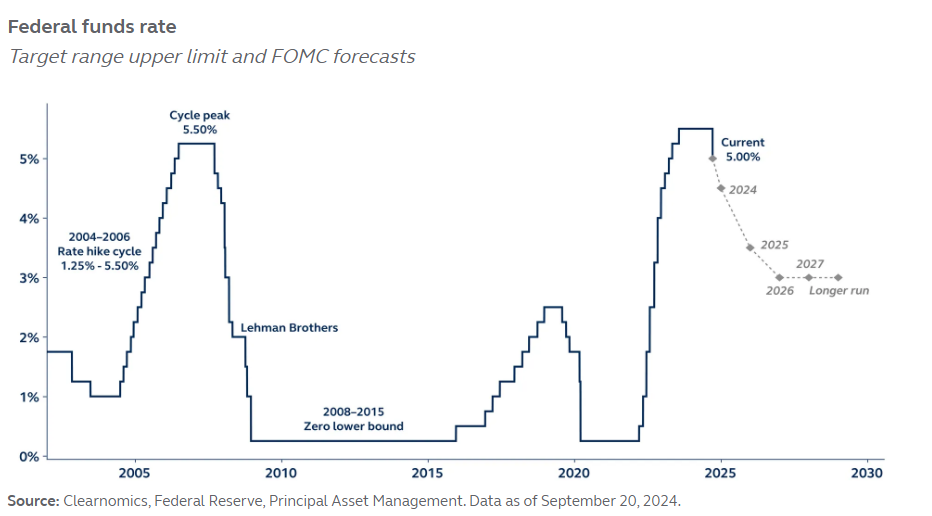Fed secures a soft landing
The Fed’s aggressive 50 basis point rate cut, while unconventional, reflects a proactive approach to stave off any potential economic weakness. Despite associations of such large cuts with crises, today's economic backdrop remains resilient. With recession risks receding and a favorable historical pattern during non-recessionary rate cutting periods, investors have reasons to remain cautiously optimistic about the market’s near-term outlook.

The Federal Reserve’s (Fed) decision to kick start its rate cutting cycle with an unusually large 50 basis points reduction of the benchmark policy rate appears designed to pre-empt any significant economic weakness and signals that this Fed will go to historic lengths to secure a soft landing.
Since the late 1980s, when Fed policy shifted away from large swings in policy rates and became more stable and credible, 50bps cuts have become associated with crises and recession. As a result, moves of this size typically prompt major market angst as investors begin to price in economic and financial disaster.
Today, however, there are no financial strains, and no asset price bubbles bursting, while economic growth, although slowing, remains supported by robust household and corporate balance sheets. Rather, the 50bps cut appears to have been driven by a combination of growing confidence around the inflation outlook, a desire to prevent job layoffs from materializing, and is an indication of the Fed’s commitment to not fall behind the curve. With a sequence of rate cuts on the way, recession risk has receded, and markets are responding positively.
Since 1985, five of the best 10 years for the S&P 500 came when the Fed was cutting interest rates without recession. Stretched valuations may temper U.S. equity gains this time, but the historical perspective suggests investors have good reason to be cautiously optimistic.

